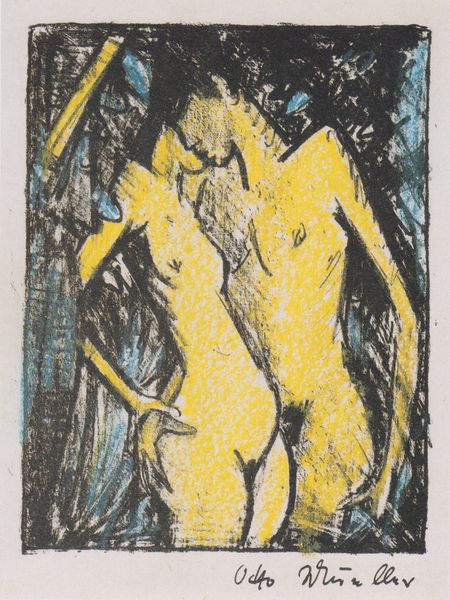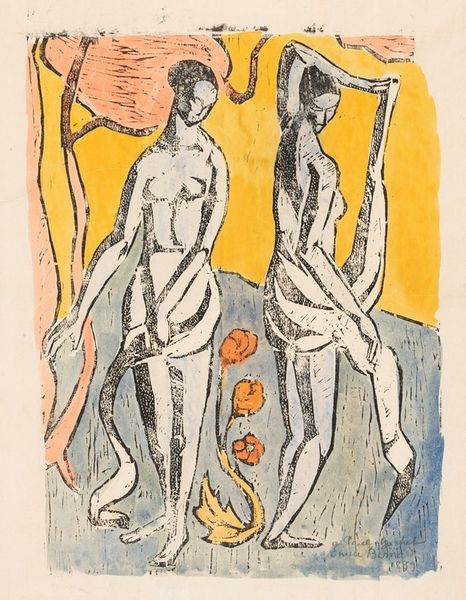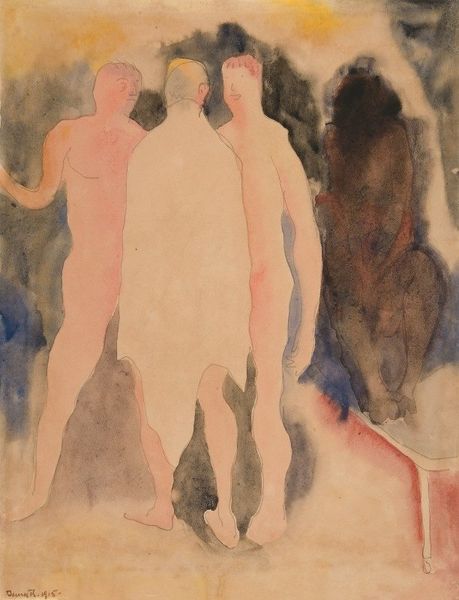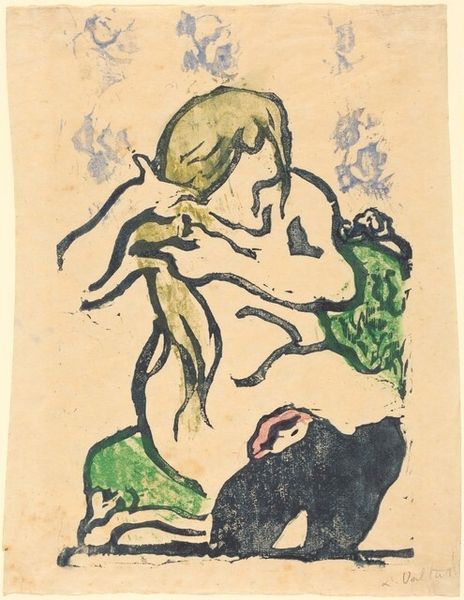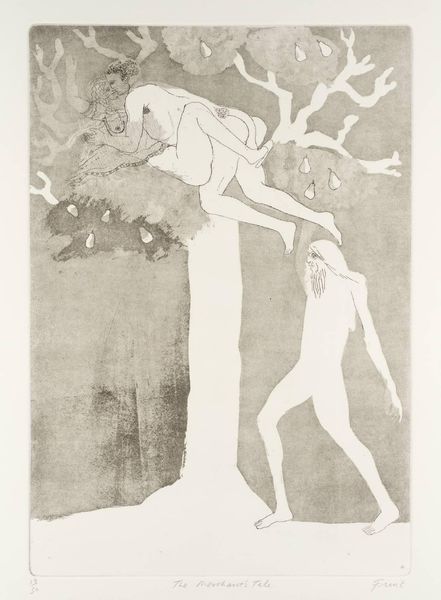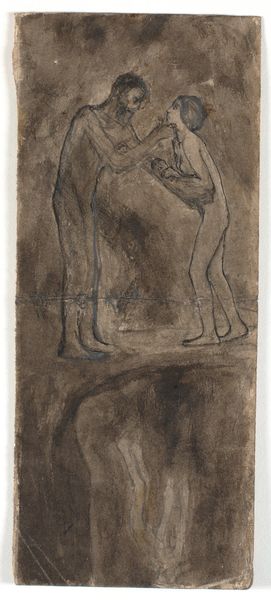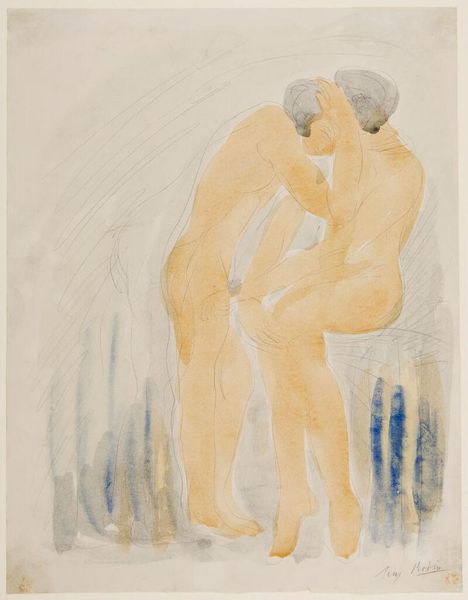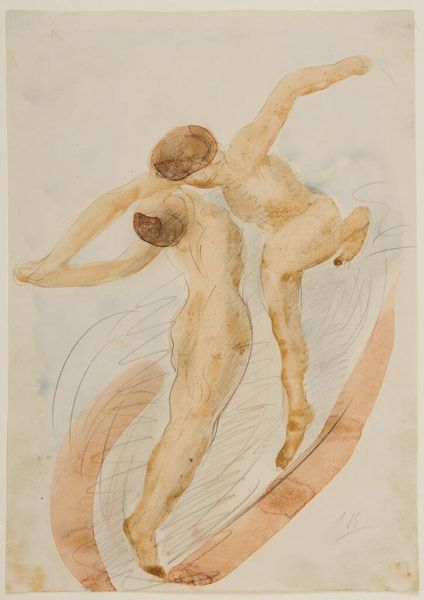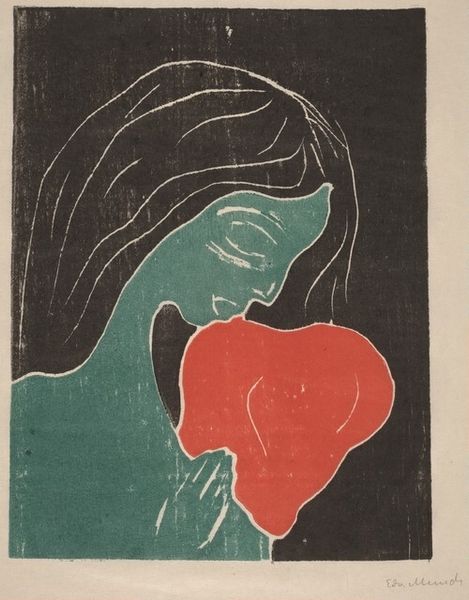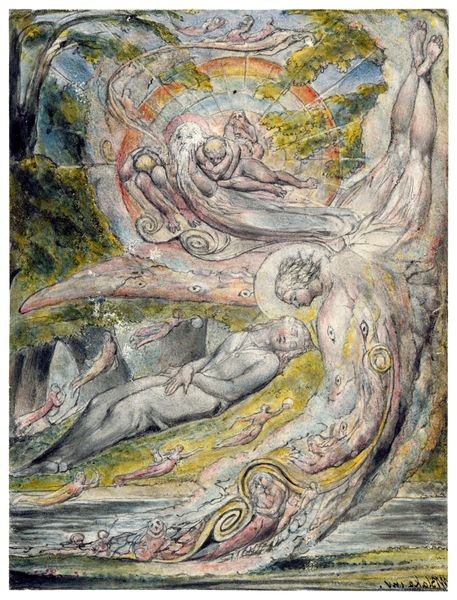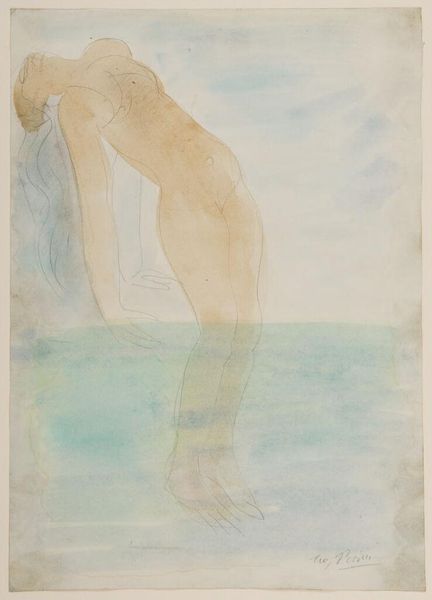
drawing, print, etching
#
drawing
# print
#
etching
#
landscape
#
etching
#
figuration
#
possibly oil pastel
#
linocut print
#
symbolism
#
watercolor
Copyright: Public domain US
Curator: So ethereal! I’m struck by how much it resembles a dream. Editor: Indeed! We’re looking at Cuno Amiet's "A Fountain of Youth," a 1917 etching that flirts with print and drawing techniques. The piece shows a rather abstracted landscape. The color usage reminds me a lot of watercolor application. It begs us to delve into the physical creation process: the plate etching, the inking, the pressure of the press. What did this labor look like in wartime, I wonder? Curator: War's stark backdrop really makes the imagined escape into youth poignant, doesn't it? Those golden, elongated figures against the washed-out blues… It’s almost as if Amiet is visually whispering. Did he actually discover the fountain, and forget to fully draw some of its residents in the process? I'm so amused imagining he literally sketched faster than life around him. Editor: Your perspective is very intuitive. I immediately think of material limitations during wartime, driving the creative reuse and blending of techniques like printmaking, drawing and watercolour, as we can see here. We can also think of distribution; etchings would have circulated ideas, perhaps coded messages. It democratizes art in a very tangible way. Curator: Coded messages – fascinating! Or perhaps the softness, that delicate quality in his figures...It’s an embrace of fragility. It's less about code and more about fleeting experience. We are getting into the realm of dreams and fantasies, surely? I just adore it. Editor: You've made me see its whimsical charm, certainly, alongside the context of production and consumption! The layered reading is rewarding. Curator: Agreed! Perhaps youth is about holding onto that delightful tension between the practical and the purely, beautifully imaginative.
Comments
No comments
Be the first to comment and join the conversation on the ultimate creative platform.
